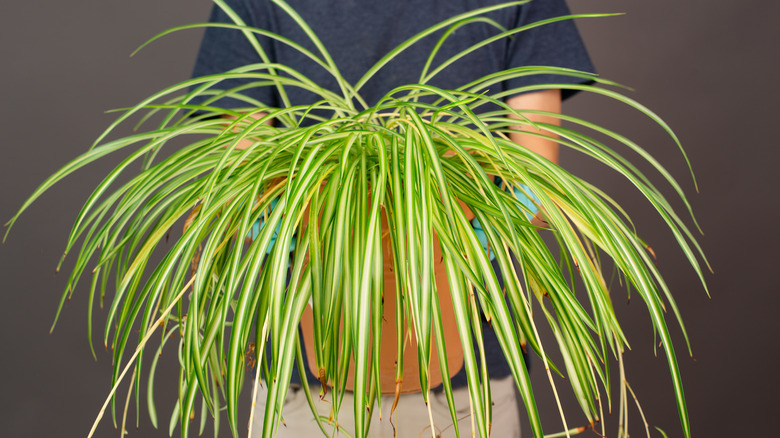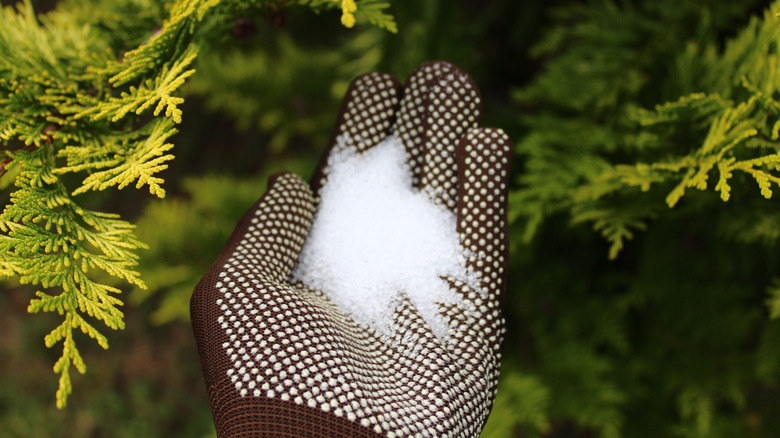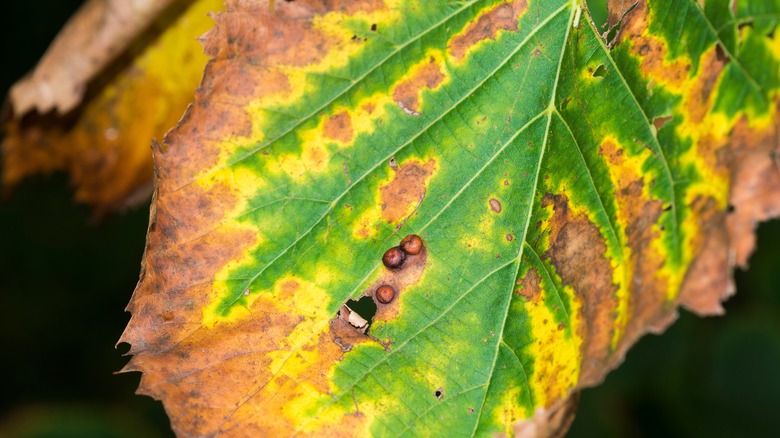Watering Spider Plants With Epsom Salt: Recipe For Success Or Waste Of Time?
Caring for your spider plants, you're constantly on the lookout for ways to keep them thriving. In the realm of plant care, Epsom salt (a mix of magnesium and sulfur) often surfaces as a potential elixir for enhancing plant health. Magnesium, in general, is heralded for its benefits in plants. It plays a critical role in the production of chlorophyll — the green pigment responsible for photosynthesis. This mineral also aids in activating enzymes for efficient metabolism and increasing the uptake of essential nutrients like nitrogen and phosphorus, which are crucial for healthy plant growth. Its importance is unquestionable, but the decision to use Epsom salt on your spider plants hinges on necessity and moderation.
In the context of indoor gardening, where conditions differ significantly from outdoor environments, the role of supplements like Epsom salt becomes even more nuanced. Indoor plants, like spider plants, often face different challenges compared to their outdoor counterparts. They rely entirely on the care they receive within the home, from watering to nutrient provision. Luckily, caring for spider plants is easy — they are known for their resilience, making them a favorite among both novice and experienced plant enthusiasts. They typically maintain adequate magnesium levels, according to a 2020 study published in the Journal of Medically Active Plants. Is the addition of Epsom salt necessary, or could it be overkill? It's important to assess whether your spider plants actually need this extra boost.
Magnesium deficiency and Epsom salts
Recognizing the symptoms of magnesium deficiency is the starting point in understanding whether Epsom salt is beneficial to your plants. When plants show signs of interveinal chlorosis, it is a telltale sign of magnesium deficiency. If your spider plant has this condition, the leaf veins will stay green, but the rest will turn yellow. You might also notice other worrying signs like wilting or the plant not growing as vigorously as it should. However, you should put on your detective hat here. Chlorosis is not always due to a lack of nutrients. Sometimes, the issue could be a virus. So, while the yellow leaves might point towards a magnesium issue, it's not a conclusion you should jump to without considering other potential causes.
If you've done your research and determined that magnesium deficiency is the problem, boosting magnesium levels can significantly improve the quality of your plant. A 2013 study published in the journal Plant and Soil came to this conclusion regarding agricultural crops. Adding Epsom salts can benefit a plant that is stressed and showing clear signs of needing more magnesium, but you shouldn't use it if there's no deficiency. It's like fixing something that isn't broken.
The risks of excess magnesium
Adding Epsom salts might just be an unnecessary step in your spider plant care routine, but the challenges in determining the right amount of Epsom salt to use can lead to accidental overuse. Without precise knowledge or guidelines, you could apply more than what your plant can benefit from. This is where specialized plant care products, which come with specific instructions, gain an advantage. They take out the guesswork and provide a balanced nutrient profile suited for houseplants like spider plants. However, if your spider plants are indeed deficient and you insist on using Epsom salts, the method of application matters. The Royal Horticultural Society offers general guidance to mix the Epsom salts with water at a concentration of 20 grams per liter with a small amount of liquid detergent. Apply this solution to your plants two to three times, spacing each application two weeks apart to ensure optimal absorption. It's vital to follow these guidelines because using too much Epsom salt can cause leaf scorch.
Although the salts may work in the beginning, they might not provide a long-term solution. While Epsom salt can increase the magnesium content in plants, its effects are often transient due to its highly soluble nature. This solubility leads to leaching, which reduces its long-term effectiveness.


